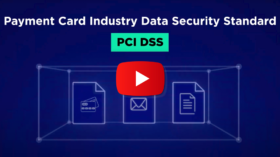Payment Card Industry Data Security Standard (PCI DSS) Compliance
Addressing Cardholder Data
Any entities involved in payment card processing—including those that store, process, or transit cardholder data—are expected to protect that data through specific controls known as the Payment Card Industry Data Security Standard (PCI DSS). While compliance is not mandated by US federal law, it is required by major credit card companies for any organization that processes, stores, or transmits payment card information. Assessments are performed annually, and non-compliant organizations can be subjected to fines and in some cases could incur greater penalties in event of a breach.
PCI DSS applies virtually every organization, but PK Protect support banking and financial services with tailored solutions specific to their needs. It covers a broad range of security topics, including network configuration, data protection, internal control, and policy development.
More than 50% of organizations failed their interim PCI DSS validation assessment due to missing security controls.
Maintain Ongoing Visibility and Control
Prepare for PCI DSS Compliance
Now is the time to implement solutions that empower your organization to achieve and sustain compliance with PCI DSS. PKWARE’s PK Protect helps businesses discover and safeguard sensitive data at every stage—whether at rest, in motion, or in use—ensuring continuous protection across endpoints, servers, cloud environments, and mainframes.







